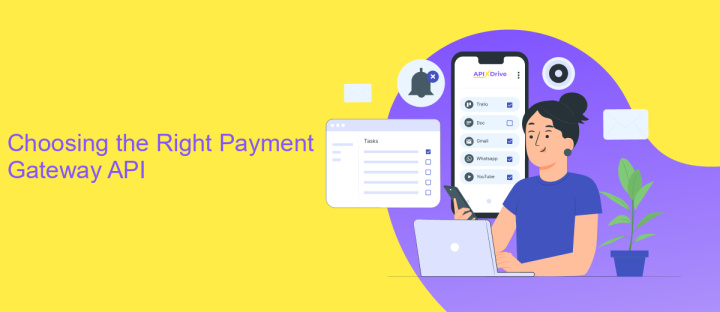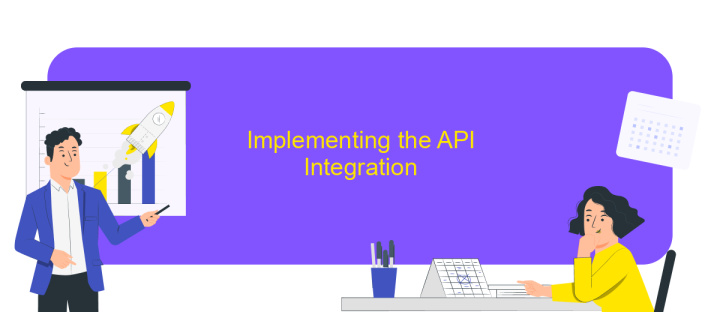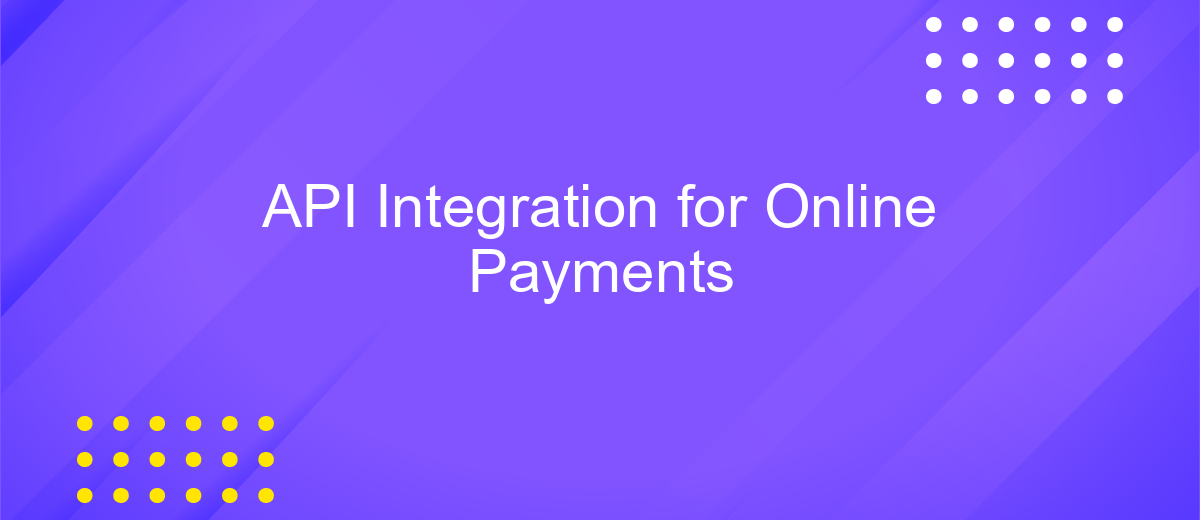API Integration for Online Payments
In today's digital economy, seamless online payment systems are crucial for businesses aiming to provide a smooth customer experience. API integration for online payments offers a powerful solution, enabling companies to streamline transactions, enhance security, and expand their payment options. This article explores the benefits and best practices of integrating APIs for online payments, helping businesses stay competitive in an increasingly cashless world.
Understanding Online Payment APIs
Online payment APIs are crucial for businesses looking to facilitate seamless financial transactions over the internet. These APIs enable merchants to connect their websites or applications to payment processing networks, allowing customers to make purchases with ease. By integrating an online payment API, businesses can offer various payment methods, enhance security, and improve the overall user experience.
- Transaction Processing: APIs handle the transfer of funds from the customer's account to the merchant's account.
- Security: They provide encryption and tokenization to protect sensitive payment information.
- Payment Methods: Support for credit cards, digital wallets, and alternative payment options.
- Fraud Detection: Built-in mechanisms to identify and prevent fraudulent transactions.
- Currency Conversion: Facilitate transactions in multiple currencies, broadening global reach.
Choosing the right online payment API is essential for businesses aiming to optimize their payment systems. Factors like ease of integration, cost, supported payment methods, and security features should be considered. By leveraging these APIs, businesses can streamline their operations, reduce transaction times, and provide a better customer experience, ultimately driving growth and customer satisfaction.
Choosing the Right Payment Gateway API

Choosing the right payment gateway API is crucial for ensuring seamless online transactions. Start by evaluating the specific needs of your business, such as the types of payments you will accept, the currencies you will support, and the geographical areas you will serve. Consider the security features offered by the API, as safeguarding customer data is paramount. Look for APIs that comply with industry standards like PCI DSS to ensure robust protection against fraud and data breaches.
Additionally, assess the ease of integration and the level of technical support provided. Some services, like ApiX-Drive, can simplify the integration process by offering pre-built connectors and automation tools, reducing the need for extensive coding. Check the API's documentation and community support to ensure you have access to resources that can assist you during implementation. Finally, consider the cost structure, including transaction fees and any setup or maintenance charges, to ensure the API aligns with your budget and business model.
Implementing the API Integration

Integrating an API for online payments is a critical step in enabling seamless transactions on your platform. To begin, ensure you have a clear understanding of the API documentation provided by the payment service provider. This will guide you through the necessary steps and requirements for successful integration. Establishing a secure connection is vital, so make sure you have the appropriate security protocols in place, such as SSL/TLS encryption.
- Register your application with the payment service provider to obtain API credentials, such as API keys or tokens.
- Set up a development environment to test the integration without affecting live transactions.
- Use the API documentation to implement the necessary endpoints for payment processing, refunds, and transaction status checks.
- Test the integration thoroughly using sandbox environments provided by the payment service to ensure all functionalities work as expected.
- Once testing is complete, move the integration to the production environment and monitor the transactions closely.
After successfully implementing the API integration, continuously monitor the system for any issues and keep the integration updated with the latest API versions. Regularly review the security protocols to protect sensitive transaction data. By following these steps, you ensure a robust and efficient payment processing system for your users.
Testing and Security Considerations

When integrating APIs for online payments, rigorous testing is crucial to ensure seamless functionality and robust security. Start by establishing a comprehensive testing plan that covers all potential scenarios, including successful transactions, failed attempts, and edge cases. Utilize both sandbox and live environments to simulate real-world conditions and validate API responses.
Security is paramount in online payment systems. Implementing best practices in security protocols can protect sensitive data and maintain customer trust. Regularly update your security measures to counteract evolving threats and vulnerabilities.
- Use secure communication channels such as HTTPS to encrypt data during transmission.
- Implement tokenization and encryption to protect sensitive information.
- Conduct regular security audits and penetration testing to identify and address vulnerabilities.
- Ensure compliance with industry standards such as PCI DSS for secure handling of payment information.
Finally, establish a monitoring system to track API performance and security incidents. This proactive approach allows for quick identification and resolution of issues, ensuring a reliable and secure payment process for users. Continuous monitoring and improvement are essential to maintaining the integrity of your online payment integration.
Maintaining and Optimizing Your API Integration
Maintaining and optimizing your API integration for online payments is crucial to ensure seamless transactions and enhance user experience. Regularly monitor the API performance to identify any bottlenecks or issues that may arise. This includes checking response times, error rates, and transaction success rates. Implementing automated monitoring tools can help in promptly detecting and addressing any anomalies. Additionally, staying updated with the latest API versions and documentation from your payment service provider is essential to leverage new features and improvements.
Optimization also involves refining the integration process to reduce latency and improve reliability. Consider using services like ApiX-Drive to streamline your API management. ApiX-Drive offers a user-friendly platform that automates data flow between applications, making it easier to manage and optimize API connections without extensive coding. Regularly test your integration in a sandbox environment to ensure all updates and optimizations are functioning correctly before deploying them live. By maintaining and optimizing your API integration, you can provide a more efficient and secure payment experience for your users.
FAQ
What is API integration for online payments?
How do I choose the right payment API for my business?
What are the security considerations for online payment API integration?
How can I automate the integration process for online payments?
What are the common challenges in online payment API integration?
Time is the most valuable resource in today's business realities. By eliminating the routine from work processes, you will get more opportunities to implement the most daring plans and ideas. Choose – you can continue to waste time, money and nerves on inefficient solutions, or you can use ApiX-Drive, automating work processes and achieving results with minimal investment of money, effort and human resources.

